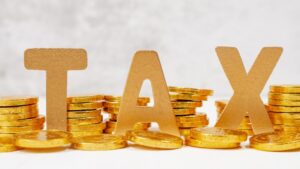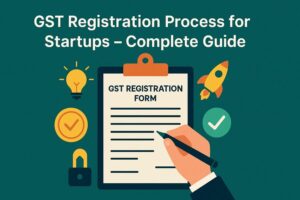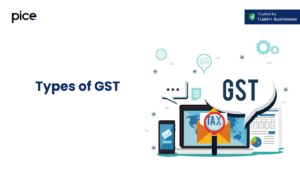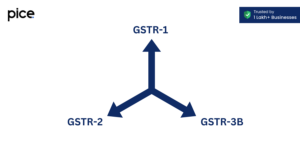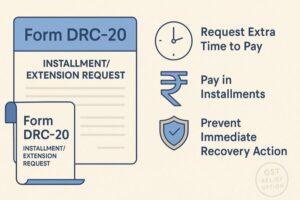Final Deadline for GST Composition Scheme
- 12 Aug 24
- 14 mins

Final Deadline for GST Composition Scheme
Key Takeaways
- The GST Composition Scheme is aimed at SMEs, offering them a simplified tax structure with reduced rates and compliance obligations.
- Eligibility for the scheme is based on annual turnover, type of business, and geographical constraints, emphasizing intra-state transactions.
- Composition dealers enjoy lower GST rates but are subject to restrictions like no inter-state sales and no transactions through e-commerce platforms.
- Key compliance requirements include quarterly return filings, annual return form submission, and specific invoicing rules.
- While the scheme reduces tax burden and compliance costs, limitations include no input tax credit and restrictions on business scope.
Eligible Businesses for the GST Composition Scheme
The GST Composition Scheme is designed as a simplified tax structure for small and medium-sized enterprises (SMEs), allowing them to pay GST at a reduced rate while fulfilling fewer compliance obligations. However, not all businesses qualify for this scheme. The eligibility criteria are carefully outlined to ensure that only businesses meeting specific parameters can opt-in, making it essential for entrepreneurs to understand these guidelines. Here's a breakdown of which businesses are eligible:
- Small and Medium Enterprises: Primarily, the scheme targets SMEs with an annual turnover that does not exceed a specified threshold. This threshold varies, so it's vital to check the current limit as defined by the GST council.
- Type of Business: Manufacturers, traders, and restaurants not serving alcohol can avail themselves of this scheme. It covers a wide array of industries, offering flexibility and support to a significant segment of the business community.
- Geographical Constraints: Businesses that engage exclusively in intra-state supply (within the same state) are eligible. The scheme does not cover those involved in inter-state supplies or exports.
- Nature of Transactions: The scheme is available to businesses dealing in goods and services deemed eligible under the GST law. Certain goods and services are excluded, necessitating a review of the specific exclusions that might apply.
- Voluntary Opt-in: Eligibility also hinges on the voluntary action of the business to opt into the scheme by filing the necessary forms and declarations as prescribed by the GST regulations.
Steps to Enroll

Enrolling in the GST Composition Scheme is a structured process that requires attention to detail and adherence to deadlines. The steps outlined below provide a roadmap for businesses seeking to take advantage of this scheme:
- Review Eligibility: Before initiating the enrollment process, thoroughly review your business's eligibility based on the criteria outlined above.
- Login to the GST Portal: Access the official GST portal using your unique GSTIN (Goods and Services Tax Identification Number).
- Navigate to the Opt-in Form: Once logged in, navigate to the services menu, where you'll find the option to opt into the Composition Scheme. This is typically achieved by submitting Form GST CMP-02.
- Fill in the Required Details: Carefully fill in all the required details in the form, ensuring accuracy to prevent any delays or issues with your application.
- Submit the Form: After double-checking the information entered, submit the form electronically through the GST portal. An acknowledgment will be provided, confirming the receipt of your application.
- Comply with Any Further Requirements: Depending on your business's specifics, you might be required to fulfill additional requirements or provide further documentation. Stay vigilant and comply promptly to ensure a smooth transition into the scheme.
- Confirmation of Enrollment: Upon successful processing of your application, you will receive a formal confirmation. This will include details of your enrollment and the effective date from which you are covered under the GST Composition Scheme.
By following these steps, eligible businesses can seamlessly enroll in the GST Composition Scheme, benefiting from simplified tax compliance and reduced tax rates. It's essential to keep abreast of any changes in the scheme's rules and ensure ongoing compliance to maintain eligibility.
Composition Dealer GST Rates Overview
Under the GST Composition Scheme, eligible businesses can benefit from reduced GST rates, significantly lower than the standard rates applied under regular GST compliance. These rates are designed to ease the tax burden on small and medium-sized enterprises (SMEs) and simplify their tax filing process. Here's an overview of the GST rates applicable to composition dealers:
- Manufacturers and Producers: For businesses involved in manufacturing or production, the GST rate is set at a comparatively low percentage of their annual turnover. This rate is specifically tailored to reduce the tax liability on manufacturers, encouraging growth and sustainability.
- Traders: Traders enrolled in the Composition Scheme are required to pay GST at a nominal rate on their turnover. This rate applies to both the purchase and sale of goods, making it a streamlined taxation process for traders.
- Restaurants Not Serving Alcohol: Restaurants that do not serve alcoholic beverages can avail themselves of the Composition Scheme at a minimal rate on their turnover. This concession is aimed at supporting the food industry, particularly small and medium-sized eateries.
- Other Service Providers: A specific rate is also prescribed for service providers who are eligible under the scheme, typically much lower than the standard GST rates, thereby reducing their tax liability and simplifying compliance.
It's crucial for businesses to stay updated with any changes or revisions to these rates, as announced by the GST council, to ensure compliance and make the most of the scheme's benefits.
Turnover Threshold for GST Composition Scheme
The eligibility to opt for the GST Composition Scheme is primarily determined by a business's annual turnover. This threshold is set by the GST Council and may be subject to revisions based on policy changes. Understanding these thresholds is crucial for businesses considering the Composition Scheme. Here are the key points regarding the turnover threshold:

- General Threshold: The scheme is generally available to businesses with an annual turnover of up to ₹1.5 crores. This threshold applies to the majority of states and businesses, enabling a wide range of SMEs to opt for the scheme.
- Special Category States: For businesses operating in states designated as special category states under the GST law, a different threshold may apply. It's essential for businesses in these regions to verify the specific threshold applicable to them, which could be lower than the general threshold.
- Recent Revisions: The GST Council periodically reviews and revises the turnover thresholds to accommodate economic changes and the needs of the business community. Businesses should stay informed about any such revisions to ensure they remain eligible.
- Calculation of Turnover: In determining eligibility, the turnover includes the aggregate value of all taxable supplies, exempt supplies, exports, and inter-state supplies made by a taxpayer with the same PAN, across India. However, taxes charged under the CGST Act, SGST Act, and IGST Act are excluded from this calculation.
By adhering to these rates and understanding the turnover threshold, businesses can effectively navigate the GST Composition Scheme, benefiting from simplified compliance and reduced tax rates.
| Category | Description |
|---|---|
| General Threshold | Available to businesses with an annual turnover of up to ₹1.5 crores. Applies to the majority of states and businesses. |
| Special Category States | Applies to businesses in states designated as special category states under GST law, may be lower than the general threshold. |
| Recent Revisions | The GST Council periodically reviews and revises turnover thresholds to reflect economic changes and needs. |
| Calculation of Turnover | Turnover includes the aggregate value of all taxable, exempt supplies, exports, and inter-state supplies by a taxpayer with the same PAN, excluding taxes under the CGST, SGST, and IGST Acts. |
Compliance Requirements in the GST Composition Scheme

The GST Composition Scheme, designed to simplify GST compliance for small and medium-sized enterprises (SMEs), comes with its own set of compliance requirements. Adhering to these requirements is crucial for businesses opting for the scheme to ensure they remain in good standing and avoid penalties. Below are the key compliance mandates for businesses under the GST Composition Scheme:
- Quarterly Returns Filing: Unlike regular GST registrants who are required to file monthly returns, composition scheme participants must file a simplified quarterly return using Form GSTR-4. This form captures aggregate turnover details and the tax paid at the composition rate.
- Annual GST Return: In addition to quarterly returns, composition dealers are required to file an annual return using Form GSTR-9A. This return provides a comprehensive overview of the dealer's annual sales, purchases, and tax paid.
- Limited Invoicing Rights: Composition dealers cannot issue tax invoices. Instead, they must issue a bill of supply for their sales, as they are not permitted to charge tax from their customers. This bill of supply should clearly mention that the dealer is a composition taxpayer and is not entitled to collect GST on supplies.
- No Input Tax Credit: Businesses enrolled in the composition scheme are not eligible to claim input tax credit (ITC) on their purchases. This is in line with the scheme's simplified tax structure, which also restricts participants from collecting GST on sales.
- No Inter-state Sales: One of the critical restrictions under the scheme is the prohibition on inter-state sales. Composition dealers are only allowed to make intra-state supplies (within the same state). Engaging in inter-state transactions can lead to disqualification from the scheme.
- Display Requirements: Businesses opting for the composition scheme must prominently display a board at their place of business, indicating that they are composition taxpayers. This is to inform customers and suppliers that the business is paying tax under the composition scheme and cannot charge GST on supplies.
- GST Payment at Composition Rates: The scheme requires participants to pay tax at specified composition rates of turnover. These rates are significantly lower than the standard GST rates but must be paid out of the dealer's pocket, as they cannot collect GST from customers.
- Restriction on E-commerce Sales: Composition dealers are generally restricted from selling goods through e-commerce platforms that are required to collect tax at source under GST. This limitation aims to simplify compliance and monitoring for small retailers.
By complying with these requirements, businesses can leverage the benefits of the GST Composition Scheme, such as reduced compliance burden and lower tax rates. However, it's essential for businesses to regularly review their eligibility and compliance status, especially in light of any changes in GST regulations or their business operations.
💡If you want to pay your GST with Credit Card, then download Pice Business Payment App. Pice is the one stop app for all paying all your business expenses.
Benefits of Opting for the Composition Scheme
The GST Composition Scheme offers several advantages for small and medium-sized enterprises (SMEs), making it an attractive option for businesses that meet the eligibility criteria. Here are some of the key benefits:
- Simplified Compliance: The scheme simplifies GST compliance by reducing the frequency of returns filings from monthly to quarterly, thereby easing the administrative burden on businesses.
- Lower Tax Rates: Participants benefit from significantly lower tax rates compared to the standard GST rates, which can lead to substantial savings and improve cash flow for small businesses.
- Reduced Compliance Costs: With simplified record-keeping and fewer filings, businesses can save on compliance costs, including lower accounting and professional fees.
- Ease of Doing Business: The simplified tax procedures under the composition scheme allow business owners to focus more on their operations and growth rather than on complex tax compliance.
- Limited Interaction with Tax Authorities: The streamlined process reduces the frequency of interactions with tax authorities, lowering the risk of audits and compliance checks for businesses under this scheme.
- Transparency and Certainty: The composition scheme provides transparency and certainty in tax liabilities, helping businesses plan their finances better.
Disadvantages of Composition Scheme
While the GST Composition Scheme has its advantages, there are also several limitations and drawbacks that businesses should consider before opting in:
- Restricted Business Scope: The scheme prohibits inter-state sales and transactions through e-commerce platforms, limiting the market reach and growth opportunities for businesses.
- No Input Tax Credit (ITC): Participants are not eligible to claim input tax credit on their purchases, which can lead to a higher overall cost of inputs if the benefit of lower tax rates does not offset this disadvantage.
- Ineligibility to Supply GST-Exempt Goods: Businesses under the scheme cannot deal in non-GST goods or services, restricting the range of products or services they can offer.
- Obligation to Pay Tax on Reverse Charge Basis: Composition dealers are required to pay tax on a reverse charge basis for applicable purchases, which can increase the tax burden.
- Limited Invoicing Rights: The inability to issue tax invoices can be a drawback when dealing with B2B customers who wish to claim input tax credit on their purchases.
- Compliance on Withdrawal: If a business opts out of the scheme or becomes ineligible, transitioning back to the regular GST regime requires compliance with standard GST provisions, which can be cumbersome.
The decision to opt for the GST Composition Scheme should be made after carefully weighing these benefits and drawbacks in the context of the business's specific needs, operations, and future plans.
 By
By 








